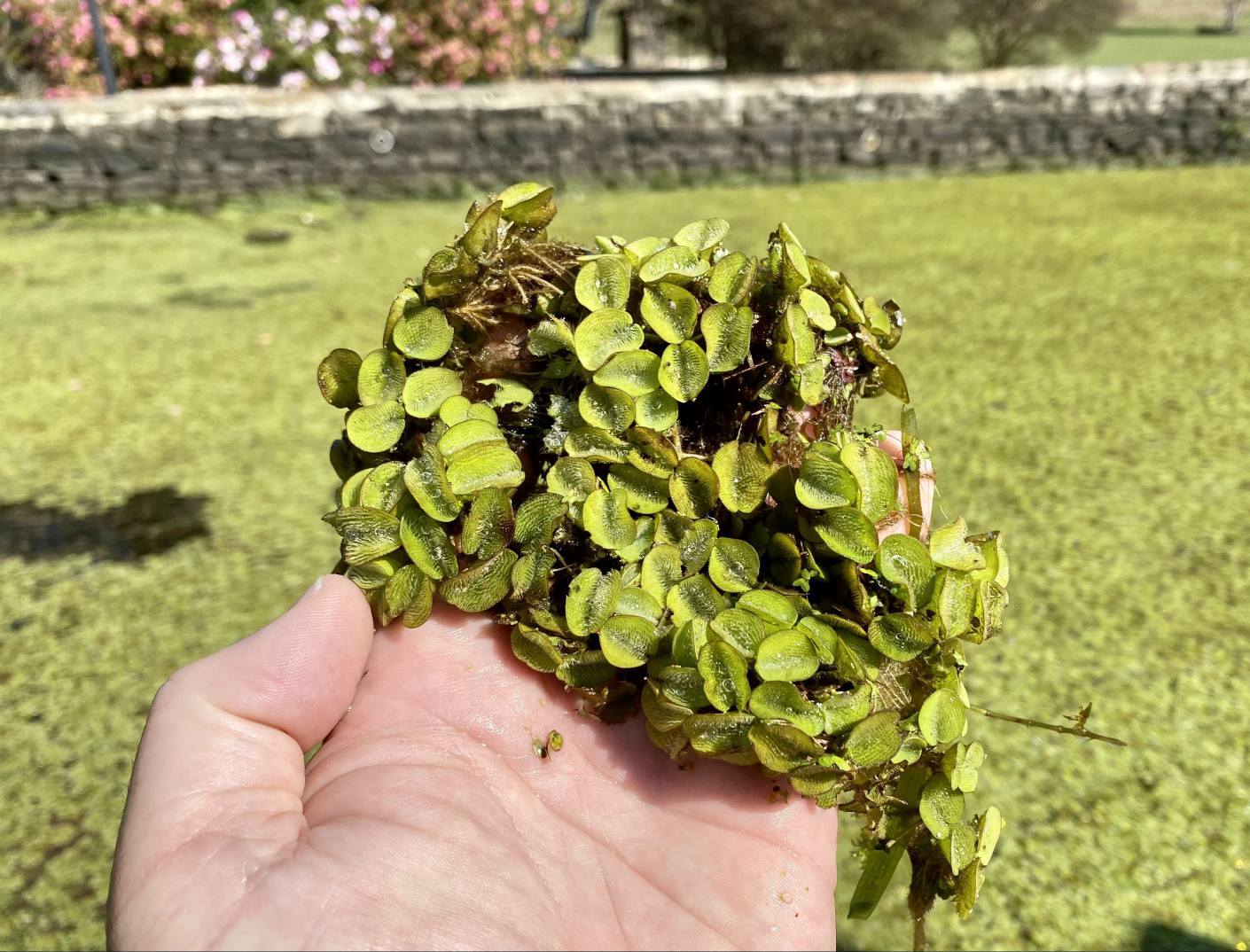
Salvinia is treated with aquatic herbicide by a Tennessee Valley Authority specialist on Guntersville Lake in Alabama. (Photo: Alan Clemons)
Invasive Salvinia minima, a rapidly growing non-native aquatic plant, has been discovered in Alabama's Guntersville Lake on the Tennessee River.
Officials with Tennessee Valley Authority say the plant is located in 4-5 miles of the midlake area on the 67,000-acre impoundment. Areas impacted include Spring Creek near Lake Guntersville State Park, a small cove near Buck Island and in Brown's Creek. It also has been found downstream in Wheeler and Pickwick lakes, although in smaller amounts than on Guntersville.
Salvinia minima, and its larger leafed Salvinia molesta, is native to South America. TVA officials do not know how the plant was introduced into Guntersville Lake. Often, they said, an introduction is due to hitchhiking plants on boats and trailers from a lake with an invasive, or someone with the plant in a yard landscape pond or aquarium dumping it in a lake.

"It could've been dumped from an aquarium or landscape, washed in due to flooding from a pond above the lake or something else," said Dr. David Webb, a longtime biologist and aquatic specialist with TVA. "There's no way of knowing for sure."
Salvinia reproduces so quickly that it can overtake large coves or tributaries of a waterway. Webb said about 20,000 acres of Guntersville Lake, which is 76 miles long, has some form of aquatic vegetation. Smaller impoundments, such as 25,000-acre Caddo Lake in Texas and 15,500-acre Lake Bistineau in Louisiana, have been choked with thick mats of salvinia despite continuous eradication efforts.
Even a handful of the plant can reproduce enough to create massive problems. The thick, dense mats block sunlight. That affects or restricts growth of beneficial native species, Webb said. The mats also restrict or prohibit boating, recreational activity, fishing and impede shoreline access.
Other invasive species TVA is attempting to manage include water hyacinth, which was found in 2019, and Cuban bullrush. Water hyacinth is a floating fern like the salvinia, but with thicker, more dense clusters of vivid green leaves and longer roots. The floating hyacinth snags against other vegetation, docks or is blown by the wind into a shoreline and then begins reproducing quickly.
According to the University of Florida Center for Aquatic and Invasive Plants, Salvinia minima is one of 10 species of Salvinia in the world. None are native to the United States.
TVA officials began immediately treating the salvinia with an EPA-approved herbicide after discovery. They hope to aggressively treat it now and kill as much as possible before winter. A cold, extended winter, especailly with extended freezing temperatures, could help efforts.
TVA's hotline for citizens to contact it with questions is 1-800-882-5263 or visit www.tva.com/plic.
Below, Dr. David Webb with TVA discusses salvinia and the agency's management efforts on Guntersville Lake:





